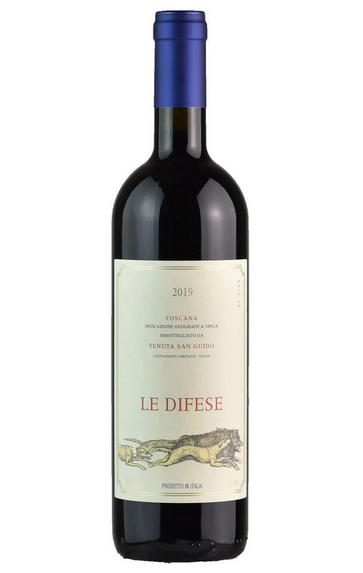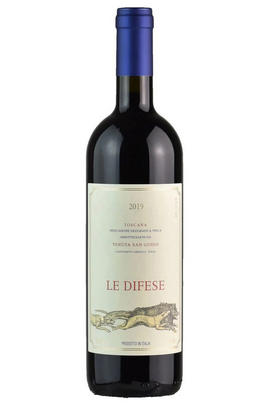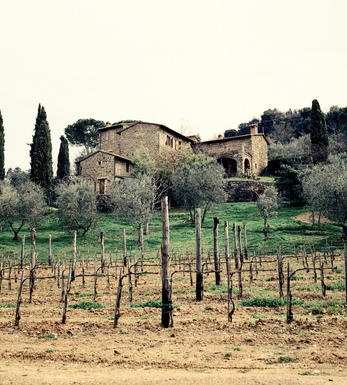
2020 Le Difese, Tenuta San Guido, Tuscany, Italy

Critics reviews
The 2020 Le Difese is laced with crushed flowers, sweet red berry fruit, cinnamon and rose petal. This light to medium-bodied, fragrant Maremma red is an ideal choice for drinking over the next few years. Served at cellar temperature, it is also a fine option for the warm summer months.
Drink 2022 - 2026
Antonio Galloni, Vinous.com (July 2022)
Tenuta San Guido's entry-level red is the 2020 Le Difese. This 45% Cabernet Sauvignon blend and 55% Sangiovese shows hints of ripe fruit and cherry with wild plum, redcurrant and bitter almond. That element of Sangiovese adds some floral intensity, too, which comes across as lilac root or dried violet. That said, you definitely feel the softness and sweetness of the hot-vintage fruit.
Drink 2022 - 2025
Monica Larner, Wine Advocate (July 2022)
A juicy and delicious red with aromas of blueberries, sliced mushrooms, currants, blackberry leaves, liquorice and bergamot. Medium-bodied with fine tannins and a creamy, round and fresh finish.
Drink now or hold
James Suckling, JamesSuckling.com (July 2022)
About this WINE

Tenuta San Guido
Tenuta San Guido's journey to becoming one of the world's most sought-after fine wines is largely owed to the vision and dedication of Mario Incisa della Rocchetta. The estate's origins trace back to his wife's family, who had owned land in Bolgheri since 1800. The name "Sassicaia," meaning "place of many stones," reflects the gravelly soil reminiscent of the Médoc region in France.
Mario Incisa della Rocchetta planted Cabernet Sauvignon and Merlot vines on this land and enlisted the expertise of Piero Antinori's winemaker, Giacomo Tachis. Tachis played a pivotal role in shaping Tenuta San Guido's winemaking philosophy and techniques.
In 1968, Tenuta San Guido released its first vintage, which garnered universal acclaim. Over time, it has become recognised as one of the world's finest Cabernet Sauvignon wines. Notably, Tenuta San Guido made history by being the first single wine to be granted its own Denominazione di Origine Controllata (DOC) status.
The wines of Tenuta San Guido are celebrated for their intense notes of cassis, coupled with a cedary elegance, and are renowned for their extraordinary power and length. This combination of factors has solidified Tenuta San Guido's position as a pinnacle of quality and prestige in the world of fine wine.

IGT Tuscany
IGT (Indicazione Geografica Tipica) Tuscany is a wine classification from Italy's Tuscany region. It is one of the official wine classifications recognized by the Italian government. IGT is a step below the highest classification, DOCG (Denominazione di Origine Controllata e Garantita), and above the DOC (Denominazione di Origine Controllata) level.
The IGT classification was introduced in 1992 to allow winemakers more flexibility in grape varieties and employ winemaking techniques while still ensuring a certain level of quality and geographical indication. This classification gives winemakers more freedom to experiment and innovate, deviating from the strict regulations of the DOC and DOCG classifications.
IGT Tuscany wines can be produced throughout the entire region of Tuscany, encompassing various sub-regions and terroirs within the area. This classification allows winemakers to use traditional Tuscan grape varieties, such as Sangiovese, and non-traditional grape varieties, including international ones like Cabernet Sauvignon, Merlot, Syrah, and others.
The IGT Tuscany classification gives winemakers the flexibility to create wines that showcase the unique characteristics of their specific vineyards and winemaking styles. It allows for experimentation with blending different grape varieties, using innovative winemaking techniques, and exploring new regional vineyard sites.
IGT Tuscany wines can vary greatly, from traditional and terroir-driven expressions to more modern and international styles. This classification has played a significant role in developing Super Tuscan wines, often IGT designated and known for their high quality and international recognition.
Overall, IGT Tuscany provides a platform for winemakers in the region to express their creativity and produce wines that reflect their unique vision while maintaining a connection to the rich heritage and traditions of winemaking in Tuscany.

Sangiovese
A black grape widely grown in Central Italy and the main component of Chianti and Vino Nobile di Montepulciano as well as being the sole permitted grape for the famed Brunello di Montalcino.
It is a high yielding, late ripening grape that performs best on well-drained calcareous soils on south-facing hillsides. For years it was blighted by poor clonal selection and massive overcropping - however since the 1980s the quality of Sangiovese-based wines has rocketed upwards and they are now some of the most sought after in the world.
It produces wines with pronounced tannins and acidity, though not always with great depth of colour, and its character can vary from farmyard/leather nuances through to essence of red cherries and plums. In the 1960s the advent of Super Tuscans saw bottlings of 100% Sangiovese wines, as well as the introduction of Sangiovese/Cabernet Sauvignon blends, the most famous being Tignanello.


Buying options
Add to wishlist
Description
The 2020 Le Difese is laced with crushed flowers, sweet red berry fruit, cinnamon and rose petal. This light to medium-bodied, fragrant Maremma red is an ideal choice for drinking over the next few years. Served at cellar temperature, it is also a fine option for the warm summer months.
Drink 2022 - 2026
Antonio Galloni, Vinous.com (July 2022)
wine at a glance
Delivery and quality guarantee